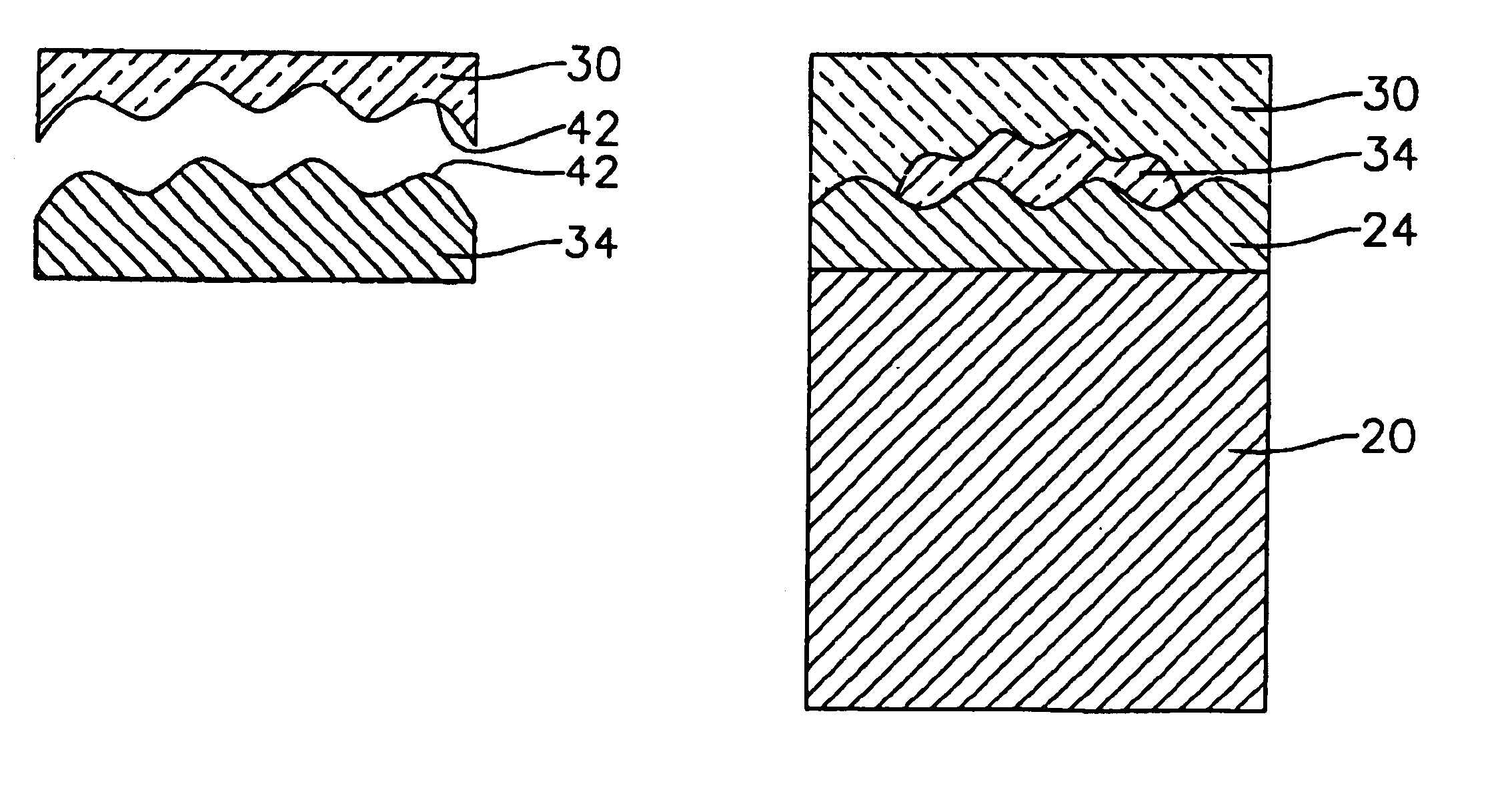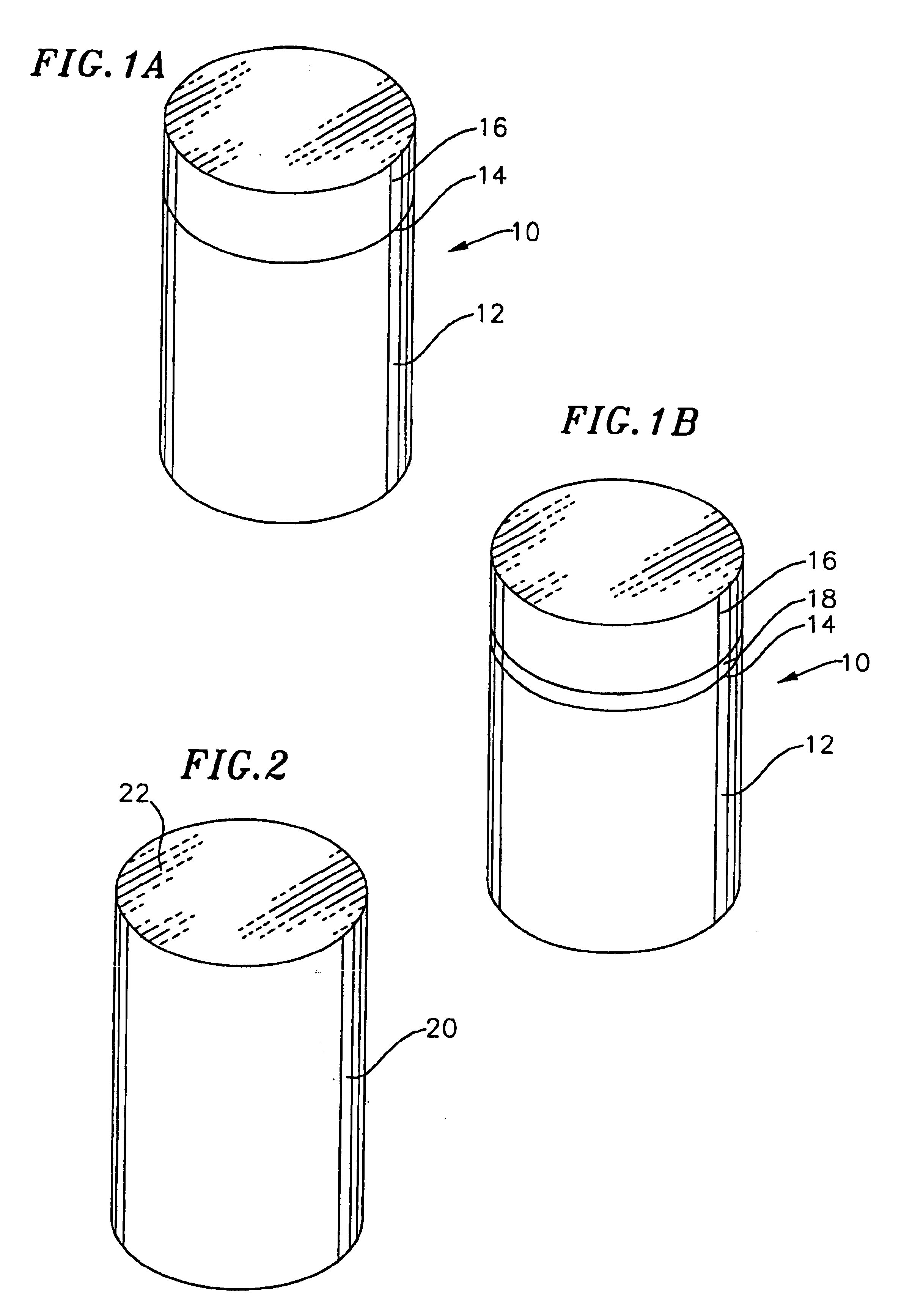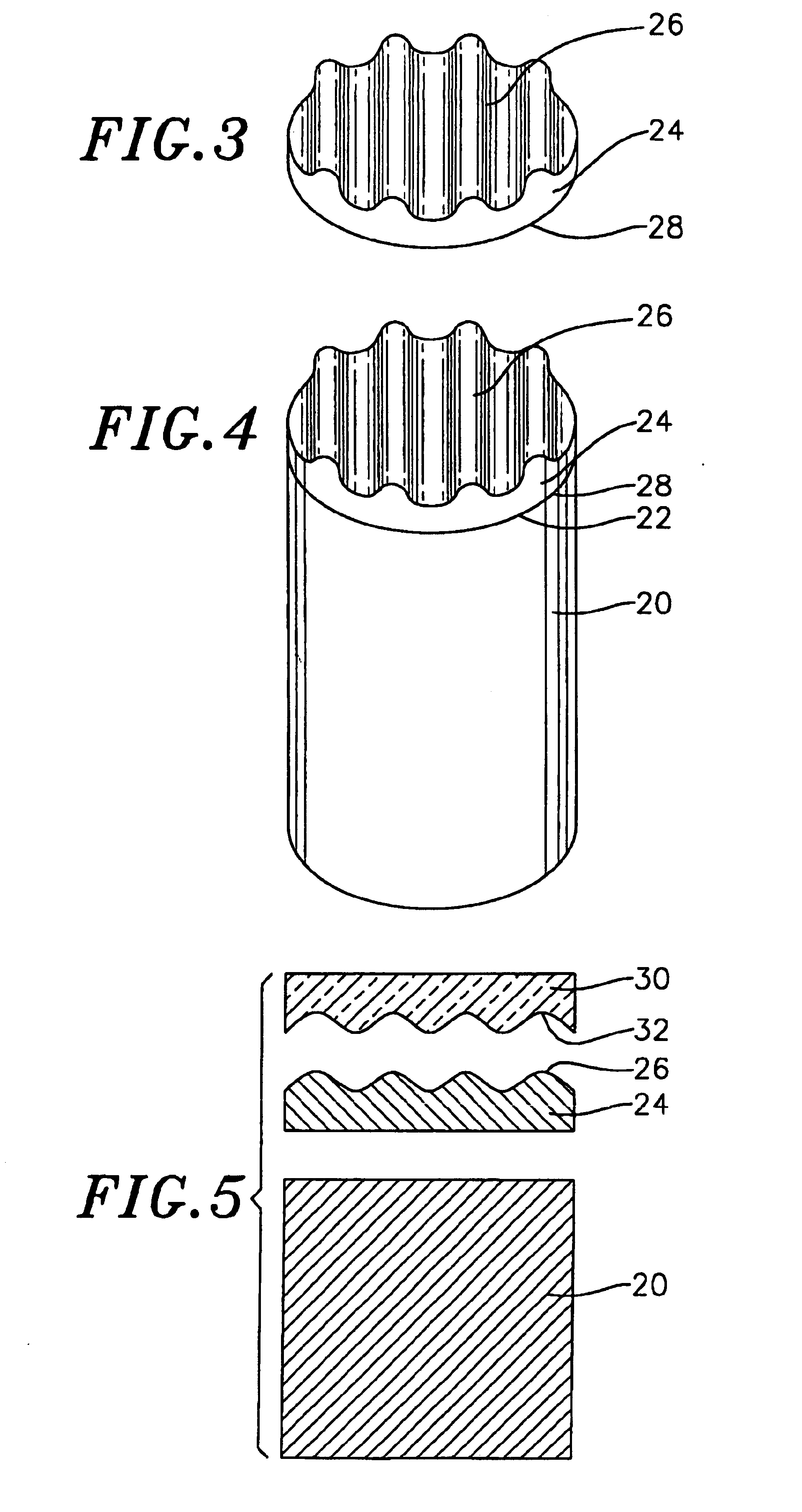Cutting element having a substrate, a transition layer and an ultra hard material layer
a cutting element and transition layer technology, applied in earth drilling and mining, manufacturing tools, construction, etc., can solve the problems of laborious methods currently used for forming cutting elements with non-uniform interfaces between cutting layers and substrates, between cutting layers and transition layers, and between substrates and transition layers
- Summary
- Abstract
- Description
- Claims
- Application Information
AI Technical Summary
Benefits of technology
Problems solved by technology
Method used
Image
Examples
Embodiment Construction
[0029]For illustrative purposes, this invention will be described in terms of a rock bit shear cutter 10 having a cylindrical body 12 (FIG. 1A). However, as it will be apparent to one skilled in the art, the present invention can be used to form other types of cutting elements. The body 12 of a shear cutter is typically made from cemented tungsten carbide. An end face of the body forms a cutting face 14. An ultra hard material layer 16 such as PCD or PCBN is bonded on the cutting face forming a cutting layer or cutting face. A transition layer 18 or multiple transition layers having properties which preferably are intermediate between the substrate and the cutting layer may also be incorporated between the cutting face and the cutting layer (FIG. 1B). A transition layer may for example be a layer of tungsten carbide, PCD or PCBN having varying particle grain sizes or may be formed from a combination these materials.
[0030]In a first embodiment, a presintered substrate 20 having an en...
PUM
| Property | Measurement | Unit |
|---|---|---|
| thickness | aaaaa | aaaaa |
| thickness | aaaaa | aaaaa |
| ultra hard | aaaaa | aaaaa |
Abstract
Description
Claims
Application Information
 Login to View More
Login to View More - R&D
- Intellectual Property
- Life Sciences
- Materials
- Tech Scout
- Unparalleled Data Quality
- Higher Quality Content
- 60% Fewer Hallucinations
Browse by: Latest US Patents, China's latest patents, Technical Efficacy Thesaurus, Application Domain, Technology Topic, Popular Technical Reports.
© 2025 PatSnap. All rights reserved.Legal|Privacy policy|Modern Slavery Act Transparency Statement|Sitemap|About US| Contact US: help@patsnap.com



